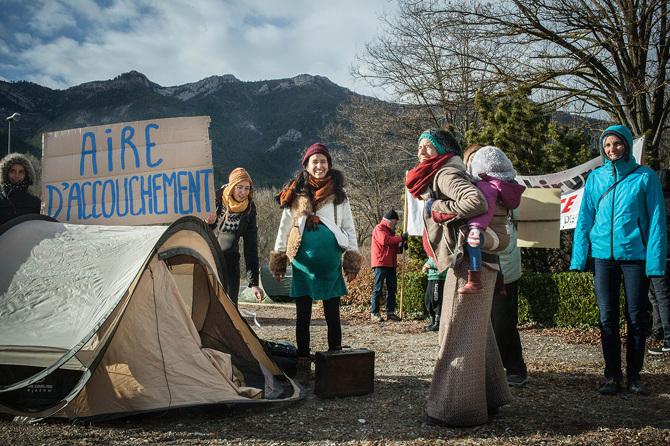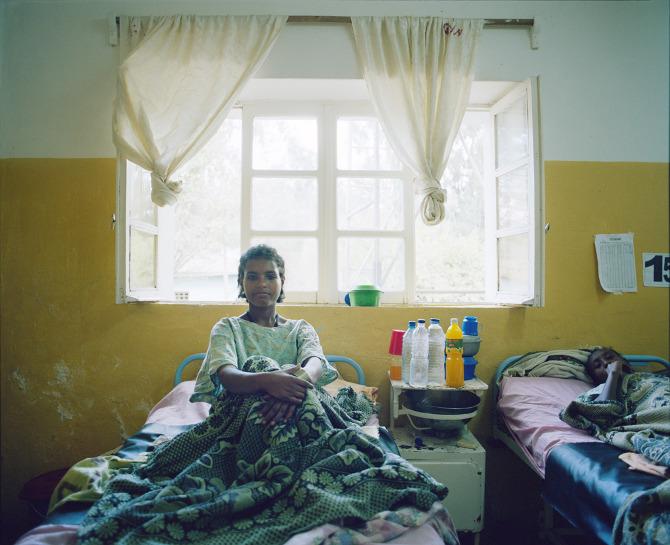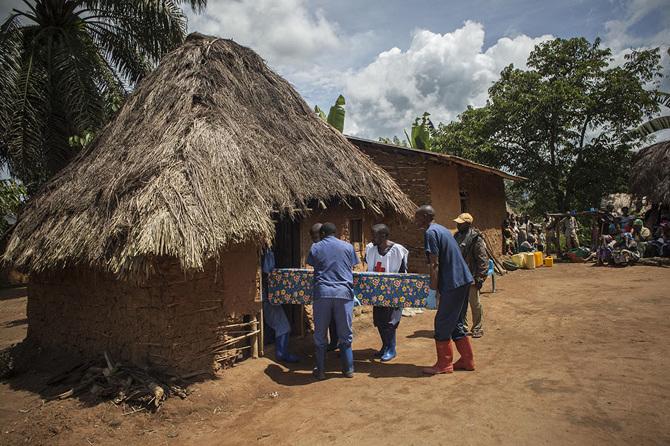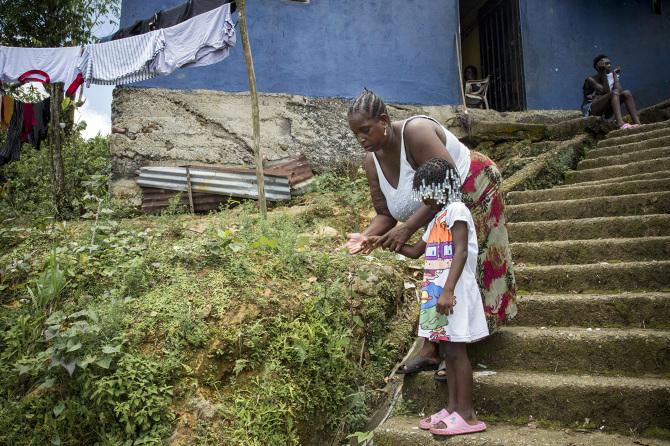News

Livia Saavedra, humanitary photojournalist
Graduating from the Post Production Photography course in 2002, Livia Saavedra began her career documenting illegal raves in the 1990s. She then went on to shoot portraits for the press and communications agencies. In 2011, she turned to humanitarian photography. She looks back on her career and gives us a behind-the-scenes look at three of her reports.
You graduated from Gobelins in 2002, but you started photography before that, in the late 1990s.
I used to take photos of the illegal raves of the free party movement. Every Sunday, I'd go and develop the photos and make prints at my mother's friend's place, a former punk. He used to make me listen to music and watch Jim Jarmusch films, and he was part of my image culture.
I covered the movement from 1998 to 2001, and this was the project I submitted for the school entrance exam. I've been scanning all the negatives from that period for a year now, and plan to turn them into a book.

Caen Teknival, May 1999, Livia Saavedra
How do you choose your subjects?
I take all the orders I'm offered, as a rule, never refuse a job.
I'm sensitive to everything to do with infant and maternal health. I worked for WAHA International (Women and Health Alliance International), an NGO specializing in obstetric fistulas, a post-delivery complication. I also covered for them the firstEbola epidemic in Guinea and the refugee crisis on the island of Lesbos.
Then I worked with Médecins du monde, Action contre la faim and Première urgence internationale. It's great to work with NGOs because you have access to complicated areas, but the security rules started to get on my nerves and I wanted to move around by myself without having to ask permission from my mission leader.
So I went back to reporting in France and did a story on the closure of maternity units in medical deserts in the Lubéron and Vercors regions.
I still regularly call WAHA director Sinan Khaddaj when I run out of ideas. It's become a joke between us, and his suggestions usually pay off handsomely. It was on his advice that I went back to cover the Ebola epidemic in Congo in 2019, and that I reported on the taboo of menstruation in Nepal.
You do a lot of humanitarian photography, on very powerful subjects. What motivated this choice?
Because it's exciting! It was also an opportunity to go out and report with a team. It took me a long time to work up the courage to go out into the field on my own. There's also an element of adventure and adrenalin, because I couldn't be content working solely in France.
What I like most of all is the path you take to get to the photo. You have to find the right contact, sail up a river for 10 hours, meet people... It's a great way of opening doors that would never be opened to you. People open up more easily, they're proud that their story is considered important.

Giving life in a medical desert, Livia Saavedra
Your work on women with obstetric fistulas in Ethiopia was exhibited at the Ministry of Women's Rights at the request of Minister Najat Vallaud-Belkacem.
It was my first assignment for WAHA International. I'd been sent to northern Ethiopia, and I was relatively unaware at the time, because I'd set off with an old medium-format 6X7, a huge film camera. I'd never do it again, but I think it's one of the most beautiful photos I've ever taken.
I followed Mulu Muleta to an Ethiopian hospital. She is one of the most qualified surgeons in the world for repairing fistulas, a complication resulting from prolonged childbirth, often lasting several days. In nine out of ten cases, the baby dies and the mother is left incontinent. In Ethiopia, most women live several days' walk from the hospital. I was arriving at the end of these women's suffering, when they were about to undergo surgery.
The report was exhibited at the French Ministry for Equality between Women and Men, in the presence of theEthiopian Ambassador to France and the Ethiopian Minister for Women's Rights. Najat Vallaud-Belkacem presented Mulu Muleta with the Legion of Honor for her work.

A new life for the cursed, Livia Saavedra, 2011
You were awarded the IWPA prize for your "Ebola par temps de guerre" series, exhibited the same year at the Les femmes s'exposent festival in Houlgate.
I was very proud to be exhibited at the festival. Just before me, there was Laurence Geai for her report on Iraq and Véronique de Viguerie. They're two of the biggest names in photography, so I was very proud to follow in their footsteps. The exhibition enabled me to take part inArte's " Lettres de photographes " on the Covid 19 epidemic a few months later.
I did this reportage in the province of Beni, which my fixer had described to me as the gateway to hell. Eastern Congo is very dangerous, especially for the Congolese. The number of people massacred per 1,000 inhabitants is higher than in Yemen at the time of the war. There were around 500 armed groups in the region, including the ADF, the Maï-Maï, who are child soldiers, and Rwandan armed groups who have pledged allegiance to Daech.... As soon as we left the town, we had to be really careful.
The Ebola epidemic arrived in this context, and was once again 90% fatal, whereas in Guinea, Liberia and Sierra Leone in 2014 there was a 40-60% chance of survival. Vaccines and medicines were soon available, but the war made it very difficult to contain the epidemic. That's why I called this subject "Ebola in wartime".
I photographed funerals and survivors. I was there for 22 days, and after 15 days I had almost no photos. At the start, you have nothing, and it 's by staying on location and pulling on all the threads that you build up the subject. In general, the first two weeks are extremely stressful because we don't have what we want. This was one of the stories where I had the least luck. Everything I wanted to do fell through.

Ebola in wartime, Livia Saadevra, 2019
You have just been awarded the "Les femmes s'exposent" grand prize for resilience for a report on midwives in Chile.
I went to the province of Chocó in Colombia, which has been completely abandoned by the Colombian state and is in the hands of a para-militarized drug cartel.
There, I followed a group of midwives. They are the only chance for women to receive care during childbirth. As they help to give birth, they are universally respected by all the armed groups and their communities.
They have ancestral knowledge, which comes from slavery or indigenous cultures. They have a vast knowledge of plants and techniques to help women. When they see that childbirth is going to be complicated, their role is also to convince women to go to hospital, because they are very reluctant to do so, and many are not covered by Colombian social security.
I needed to illustrate the resilience of an individual or a group. I wanted to show how these communities had organized themselves to compensate for the Colombian state's inaction regarding health structures, and how they had set up a community health system.

The guardians of the communities, Livia Saavedra, 2022
What's your next project?
I'd like to go back to Colombia to do a story on this drug cartel, but my shoulders are too small to do it on my own.
I'd also like to look at Moldavia. There are around 400,000 Ukrainian refugees there, many of them women who have suffered violence at the hands of the Russian army. I'd like to do a report on them. Now I just need to find the right contact and the right wire.
I'm also working on a longer story about Yezidi widows, a community that was exterminated by Daesh. Some of them have been welcomed in France with their children.

The war for peace in Colombia, Livia Saavedra, 2018
What do you remember most about your time at Gobelins?
It was a really solid course and I loved working in the lab and making prints. We had courses in the sociology of photography, and I think that's fundamental, because we were given lots of tools that weren't just technical.
What advice would you give to a recent graduate?
You just have to get on with it and not listen to any advice. It's not the best who succeed, but the most enduring.
Interview by Sophie Jean













No comment
Log in to post comment. Log in.